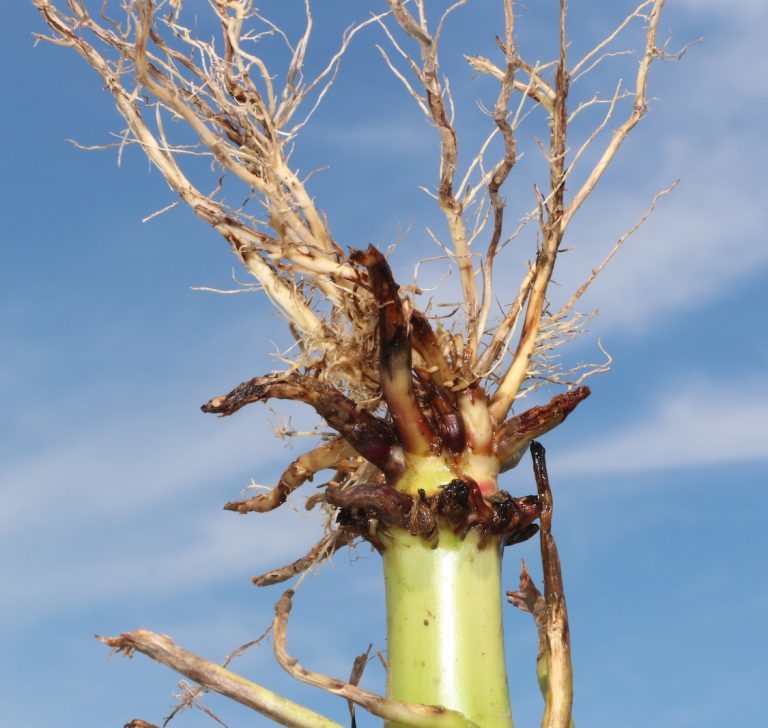By Bryan Jensen, University of Wisconsin-Madison Dept. of Entomology and Integrated Pest Management Program
Several storms hit the Midwest recently, which included high winds, heavy rains, or both. In some locations these storms have caused significant corn lodging which may or may not have had corn rootworm damage. It is the time of year, however, when larval feeding can significantly reduce root mass. But there is only one way to tell for sure. You cannot look at the above ground symptoms and make an accurate diagnosis. You will have to dig a representative sample of roots, power wash and look for feeding.
Corn rootworms go through one generation per year, however, generational time is drawn out. Currently we have young larvae, late instar larvae, pupae and emerging adults present. The damage I would expect to see in the field right now would primarily be pruning but also some scarring by early instar larvae. Root pruning should peak over the next few weeks depending on your location.
Future crop management decisions will benefit from proper root evaluation, not only on lodged corn but all corn acreage. Many times, I have seen corn fields with moderate to severe root pruning standing straight. Other times I have seen severely lodged corn without rootworm injury. Many factors can contribute to or cause lodged corn including weather, compaction, soil type, hybrid and diseases. Jumping to conclusions and assumptions may lead to unsound management decisions.
The best time of year to evaluate rootworm damage is now (July). As I mentioned, larval feeding should be peaking and this is the easiest time to evaluate roots for damage. If we wait until August, there may be significant regeneration of roots which can mask feeding. August root evaluations are still possible just a little more difficult.
Healthy corn roots are white. Rootworm feeding will range from scarring caused my early instars to more severe pruning. The Iowa State Nodal Injury Scale (NIS), developed by Iowa State Entomologists, is the industry standard for quantifying root damage and focuses on root pruning cause by late instar larvae. Pruned roots are just that. However, you will need to know the difference between rootworm feeding and “shovel blight.” Frankly, it is near impossible to dig roots without cutting some with the shovel or pulling out of the ground which can (?) look like rootworm damage. Roots pruned by rootworms will be discolored at the tips and that discoloration may extend back on the root. Roots injured by a shovel will remain relatively healthy looking but you must wash/rate roots in a short period of time.
I would suggest using a power washer to remove all soil. Remember you are looking for roots that are pruned to at least within 1½ in. of the stalk. Sometimes, especially under heavy pressure, roots will be pruned completely back to the stalk. If all the soil is not removed, you could easily miss significant damage. More information on quantify rootworm damage using the NIS can be found in this reference publication.
Evaluating corn roots for damage has multiple benefits beyond verifying if lodged corn is caused by rootworm feeding. Those extra benefits include verifying effectiveness of your current rootworm management tactic, verifying if you have early stages of Bt resistance and, if on first-year corn, if you have any damage from rotation resistant rootworms which has been very uncommon is Wisconsin for the last decade or more.







Post a comment
Report Abusive Comment